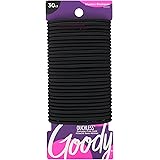Introduction to Hula Hooping
Hula hooping, once primarily recognized as a children’s toy, has evolved significantly over the years into an engaging fitness activity that appeals to individuals of all ages and fitness levels. The historical roots of hula hooping can be traced back to ancient civilizations, where similar circular objects were used for recreation and physical activity. However, the modern hula hoop gained prominence in the 1950s when the Wham-O toy company introduced it to the masses, sparking a nationwide craze among children.
As societal norms around fitness began to shift in the late 20th century, hula hooping saw a resurgence as a viable means of exercise. This revival was characterized by the emergence of various hula hooping styles and techniques, transforming it from a simple childhood game into a sophisticated form of fitness training. Contemporary hula hooping integrates elements of dance and fitness, encompassing core-strengthening movements that contribute to overall health and well-being. This transformation has also led to the development of specialized hoops designed for adults, enhancing the experience and effectiveness of workouts.
Today, hula hooping is celebrated for its versatility and inclusivity, attracting enthusiasts ranging from casual exercisers to dedicated fitness aficionados. The rhythmic, flowing motions associated with hula hooping provide a full-body workout, emphasizing core stability and balance. This dynamic activity has been widely adopted in various fitness classes, often combining elements of cardio, flexibility, and strength training. Moreover, the social aspect of hula hooping encourages community engagement, fostering connections among participants. As a result, hula hooping has become not only a fun recreational activity but also a path toward improved physical fitness and overall enjoyment.
The Benefits of Core Hula Hooping
Core hula hooping is a dynamic and enjoyable exercise that offers numerous benefits for overall fitness. Primarily, it engages a wide range of muscle groups, most notably the core muscles, which include the abdominal muscles, obliques, and lower back. As individuals twirl a hula hoop around their waist, they must activate these muscle groups to maintain balance and control. This activation not only strengthens core muscles but also improves stability and posture, which are essential components of any fitness regimen.
Moreover, hula hooping enhances coordination and balance. The rhythmic motion required to keep the hoop in motion optimizes body awareness and spatial orientation. Participants often find that as they practice, their ability to coordinate body movements improves significantly, which can transfer to other physical activities and sports. The requirement for precise timing and movement fosters a sense of fluidity, ultimately leading to greater agility.
In addition to improving core strength and coordination, hula hooping serves as an excellent cardiovascular workout. Engaging in this activity elevates heart rate, providing an effective means of promoting heart health. Regular participation can contribute to improved circulation and increased stamina. Furthermore, the aerobic nature of hula hooping ensures that participants can burn calories while having fun, thereby enhancing overall fitness levels.
In summary, core hula hooping combines core strengthening benefits with improvements in coordination and cardiovascular health. As an enjoyable workout, it appeals to many individuals looking to enhance their fitness while having fun. Incorporating hula hooping into a routine not only contributes to physical fitness but also nurtures a positive attitude towards exercise, making it a beneficial addition to any wellness program.
Choosing the Right Hula Hoop
Selecting the appropriate hula hoop is crucial for maximizing the benefits of core workouts while ensuring an enjoyable experience. The right hoop not only enhances your fitness routine but also caters to your individual preferences and skill level. To begin, consider the size of the hoop; it should ideally reach your waist when stood upright. A larger hoop, typically 30-40 inches in diameter, provides more surface area and is generally easier for beginners to keep in motion. Conversely, smaller hoops, ranging from 28 inches to 32 inches, demand more skill and control, making them suitable for more advanced users.
Weight is another key factor when picking a hula hoop for core exercise. Heavier hoops, generally weighing between 1 to 5 pounds, are effective for fitness routines as they provide additional resistance, engaging your core muscles more effectively. On the other hand, lighter hoops are often preferred by beginners, as they are easier to maneuver and can help build confidence in executing the basic techniques. It is essential to test various weights to find the optimal balance that suits your fitness level and workout goals.
When exploring different brands, it is crucial to focus on quality and durability. Look for hoops constructed from polyethylene or plastic, which are both sturdy and flexible. Many reputable brands offer hoops specifically designed for fitness; these are often wider and thicker than standard hula hoops. Popular options include weighted fitness hoops or those with foam padding for added comfort during workouts. Exploring user reviews and testimonials can also inform your decision. By taking the time to assess size, weight, and brand, you can ensure that your hula hoop becomes a valuable and enjoyable tool in your core workout regimen.
Basic Hula Hooping Techniques
Hula hooping serves as both a vibrant form of exercise and an enjoyable recreational activity. For those new to hula hooping, mastering foundational techniques is crucial for building skills, confidence, and physical fitness. The first step is to properly position the body. Stand with your feet shoulder-width apart, with your knees slightly bent to create a stable base. This posture not only aids balance but also prepares the core muscles for the rhythmic movements involved in hooping.
Once the stance is established, the hula hoop can be positioned around the waist. Start by placing the hoop against your lower back and use a gentle push to send it around the body. As the hoop approaches the front, engage your core muscles to keep it circulating. It is essential to maintain a steady, smooth motion, and letting the hips rock back and forth will assist in sustaining momentum. Beginners often find it helpful to practice this motion in short intervals, gradually increasing the speed and duration as they become more comfortable.
Incorporating footwork can add variety and enhance coordination during hula hooping. A basic approach is to step side to side while keeping the hoop at waist level. This not only adds a fun element but also helps in developing agility and balance. Once proficient, you can experiment with different movements such as turns, spins, or even knee lifts while maintaining the hoop’s rotation. To further enhance the experience, try adding arm movements to engage additional muscle groups, promoting full-body fitness. By practicing these basic techniques, beginners can enjoy the rhythm and flow of hula hooping while reaping its many physical and mental benefits.
Core Hula Hooping Exercises
Core hula hooping combines the joy of rhythmic movement with effective core strengthening exercises. Here, we outline a series of exercises that utilize a hula hoop to enhance core stability and strength. Each exercise is designed to be performed with controlled movements, promoting engagement of the abdominal muscles while ensuring safety and enjoyment.
One effective exercise is the “Hoop Twists.” To perform this exercise, begin by standing with your feet shoulder-width apart, gripping the hula hoop at waist level. Initiate the hoop’s spin around your waist while engaging your core. Gently twist your torso side to side, allowing your arms to move freely. This exercise not only strengthens the obliques but also improves coordination and balance. Aim for at least 30 seconds of continuous twisting.
Next, try the “Hoop Pass.” Start by placing the hula hoop around your waist and begin spinning it. Slowly lean to one side, allowing the hoop to roll down your arm until it is resting on your hand. Once it is secure, raise your arm back up while shifting your weight and bringing the hoop back to your waist. This exercise enhances core engagement, especially the lateral muscles, and will improve hand-eye coordination. Repeat this sequence on both sides for balanced development.
Another beneficial exercise is the “Hula Plank.” Begin in a plank position with the hoop placed in front of you. As you maintain the plank, roll the hoop side to side with one hand, engaging your core to stabilize your body. This dynamic movement increases core activation and builds endurance. Aim to perform this for up to a minute, rest, and repeat two to three times.
Incorporating these core hula hooping exercises into your routine will provide a fun and effective way to enhance your fitness while enjoying the playful nature of the hoop. These exercises not only improve core strength but also offer a creative outlet for physical activity.
Fun Hula Hooping Games and Challenges
Hula hooping is not only an excellent form of exercise but also a fun activity that can be enjoyed alone or with others. Incorporating games and challenges into your hula hooping routine can significantly enhance the experience, maintaining motivation and fostering social interaction. One popular game is the “Hula Hoop Relay.” Participants are divided into teams, and each person must hula hoop for a designated distance before passing the hoop to the next teammate. This game promotes teamwork and encourages healthy competition.
Another engaging challenge is the “Hula Hoop Trick Contest.” In this activity, individuals showcase their best hula hoop tricks, such as spinning, waving, or even dancing with the hoop. Participants can take turns demonstrating their skills, and a judging panel can provide scores based on creativity, difficulty, and style. This challenge not only builds skills but also boosts confidence in an enjoyable environment.
For those looking to blend fitness with fun, the “Hoop Dance-Off” offers a vibrant platform for creative expression. Participants can choreograph short dance routines incorporating hula hooping, and then perform in front of each other. This enables individuals to explore rhythm and movement, while also benefiting cardiovascular fitness. To enhance the excitement, a themed dance-off can be organized where participants dress according to a specific theme, adding an additional layer of enjoyment.
Lastly, for a more relaxed setting, the “Hula Hoop Circle” game is ideal. Everyone stands in a circle, and the goal is to pass the hoop around without breaking the flow of hula hooping. This encourages communication and fun interaction among participants. Overall, integrating games and challenges into your hula hooping sessions can keep enthusiasm high, leading you to enjoy the fitness benefits while sharing laughter and camaraderie with others.
Integrating Hula Hooping into Your Fitness Routine
Incorporating hula hooping into your existing fitness routine can enhance your overall workout experience, providing both fun and effective exercise. To begin with, consider allocating about 15 to 30 minutes specifically for hula hooping sessions. This time frame allows you to engage your core muscles while also enjoying the rhythmic movement of the hoop. Depending on your fitness level, aim to include hula hooping into your workout schedule two to three times per week.
One effective approach to integrating hula hooping is to treat it as a warm-up or cool-down activity before and after other workouts. For instance, you could start your routine with a ten-minute hula hooping session to elevate your heart rate and loosen your muscles. Similarly, incorporating hula hooping at the end of your workout can serve as an enjoyable way to stretch and relax the body. This will contribute positively to muscle recovery and overall enjoyment of your routine.
Additionally, consider combining hula hooping with other exercises to maximize your fitness benefits. For example, alternating between hula hooping and strength training exercises, such as squats or lunges, can help maintain your heart rate while ensuring you work on various muscle groups. You can create a circuit by hooping for two minutes between sets of strength exercises. This approach not only keeps your routine lively but also adds a fun element that may motivate you to remain consistent with your workouts.
Moreover, stay open to joining hula hoop classes or online sessions, which can further enrich your fitness regimen and connect you with a community of hoopers. Embracing hula hooping in your fitness routine can lead to a unique balance of enjoyment and fitness that cultivates long-term adherence to an active lifestyle.
Safety Tips for Hula Hooping
Engaging in hula hooping can be a fun and effective way to enhance fitness levels, but ensuring safety while practicing is crucial to prevent injury. One of the most effective ways to maintain safety during hula hooping is to perform proper warm-up exercises. A dynamic warm-up focuses on loosening the muscles and increasing blood flow, which can prepare the body for the physical demands of hooping. Exercises such as arm circles, torso twists, and light jogging can help prevent strains or sprains during hooping sessions.
Another important aspect of safe hula hooping is recognizing personal physical limitations. Each individual has different fitness levels and conditions, which may affect their ability to hula hoop safely. It is essential to listen to one’s body and refrain from pushing beyond one’s comfort zone. Beginners should start slowly and gradually increase the duration and intensity of their sessions, allowing sufficient rest periods to avoid fatigue. Being conscious of any pain or discomfort during practice can help you avoid potential injuries.
Moreover, selecting an appropriate environment for hula hooping significantly contributes to safety. Practicing in a spacious area free from obstructions and hazards is vital. Outdoor spaces with a firm, level surface are ideal to avoid tripping or losing balance. Moreover, ensuring that the space is safe from distractions, such as heavy foot traffic or rough terrain, can help you focus better and enjoy the experience without the risk of injury.
By incorporating proper warm-up techniques, recognizing personal limitations, and choosing an appropriate practice environment, individuals can enjoy hula hooping while minimizing the risk of injury. Safety is fundamental to ensuring a pleasurable and effective fitness journey through hula hooping.
Conclusion and Encouragement to Start Hooping
In conclusion, embracing hula hooping as a core fitness activity presents numerous benefits that extend beyond physical health. This engaging exercise is not only a fun way to enhance your workout routine, but it also offers a unique combination of cardiovascular improvement and core strength development. As outlined in the previous sections, hula hooping can significantly help in toning your abdominal muscles, improving flexibility, and increasing coordination.
Aside from the physical advantages, hula hooping fosters a sense of enjoyment that is often missing in traditional workouts. It allows individuals to express their creativity while engaging in a healthy activity, making it an enjoyable addition to any fitness regimen. The rhythmic movements involved in hula hooping serve as a form of active meditation, allowing individuals to experience a sense of flow and relaxation that can reduce stress levels. This aspect of enjoyment is important, as it encourages individuals to incorporate fitness into their daily lives rather than viewing it as a chore.
If you have not yet tried hula hooping, now is the perfect time to start. The accessibility of hoops, whether they are weighted or traditional, helps participants of all skill levels to engage in this dynamic activity. It is easy to find online resources and classes that can guide you through the basic techniques and routines. Moreover, finding a hula hooping community can further enhance the experience through shared support and motivation.
So, why wait? Pick up a hoop today and experience the joy and fitness benefits that hula hooping offers. You might just find that it becomes one of your favorite ways to stay active while having fun.







Оформите займ https://zaimy-82.ru онлайн без визита в офис — быстро, безопасно и официально. Деньги на карту за несколько минут, круглосуточная обработка заявок, честные условия и поддержка клиентов 24/7.
Все найновіше тут: https://infoquorum.com.ua/navchannia.html
http://Jeffreywhaps
Сопровождение ВЭД деятельности помогло нам наладить поставки и избежать штрафов на таможне. Специалисты контролируют весь процесс от начала до конца. Очень удобно, что можно не погружаться в бюрократию и быть уверенными в результате: Сопровождение ВЭД